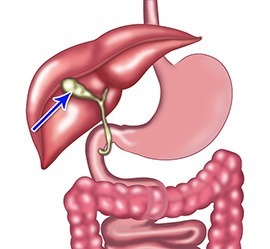Gallbladder Surgery

Anatomy
The gallbladder is a hollow organ that lies just below the liver. Its primary function is to store bile (a thick yellow-green liquid) which is produced in the liver. During eating, stored bile is emptied from the gallbladder into the common bile duct and then delivered into the small intestine. Bile aids in the absorption of fat into the lymph and blood circulation via the small intestine.
Diseases of the Gallbladder
Gallbladder diseases are common. Conditions affecting the gallbladder include:
- Gallstones - they can cause abdominal pain (called biliary colic) which often occurs after eating fatty food
- Gallbladder polyps - these may not require surgery unless they are large, increasing in size, symptomatic, or if they have concerning features on ultrasound.
- Inflammation of gallbladder (cholecystitis)- this can occur with or without the presence of gallstones. If left untreated, it can progress to infection with pus in the gallbladder (empyema) or a gangrenous gallbladder.
- Gallbladder cancer - this is a very rare condition requiring adjunctive cancer therapy and more extensive surgery compared to benign conditions
Symptoms
Gallbladder disease can lead to severe abdominal pain that may be intermittent or constant. The pain is usually felt on the right side of the upper abdomen or the upper abdomen and may travel around the right back or right shoulder. Other associated symptoms may include nausea, vomiting and fever.
Diagnosis
Diseases of the gallbladder are diagnosed by review of medical history, physical examination and imaging confirmation. An abdominal ultrasound is performed to detect the presence of gallstones and inflammation of the gallbladder as well as potential migration of gallstones into the bile duct causing obstruction to the flow of bile. Blood tests are ordered to check for inflammation/infection and jaundice.
Treatments
Treatments depend on the type of gallbladder disease. Gallstones in the gallbladder may not produce any symptoms in which case surgery may not be recommended. However, conditions causing pain (biliary colic), inflammation/infection (cholecytitis), and concerning gallbladder polyps would usually require definitive management by surgical removal of gallbladder. This is carried out using laparoscopic (key-hole) surgery techniques in the vast majority of cases.
